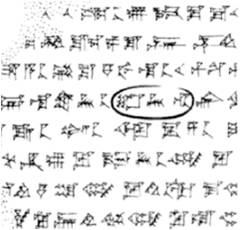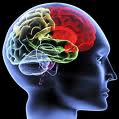Inflammation is an important biological response to various types of tissue damage. The process of inflammation, carried out by resident cells of the innate immune system as well as by blood-derived immune cells that infiltrate into the tissue, precludes additional injury and promotes the clearance of previously destroyed tissue in order to encourage regeneration. pHLOGISTIX is interested in specific forms of inflammation that affect the nervous system.
Inflammation is one of the oldest recorded medical conditions. Written symbols for it have been identified in Sumerian hieroglyphics as early as 2700 BCE. The Sumerian words included Nappahu (blow fire) and Ummu (fever).
In peripheral and superficial tissues, the classical signs and symptoms of inflammation are rubor, calor, tumor, dolor (redness, heat, swelling, and pain) as described by the Roman academician Celsus in the first century CE.
Although the major trigger is infection, inciting stimuli being proinflammatory molecules of the invading microbes, there are an assortment of sterile stimuli including mechanical trauma, ischemia, toxins, minerals, crystals, chemicals, and various antigens.
Sterile inflammatory stimuli are broadly categorized into injurious, irritant and antigenic. In general, most signs and symptoms of inflammation are caused by changes in the local vasculature of affected tissues. The inflammatory response plays an important role in host defense—a first line of defense recruited to combat a potential threat. However, in this way, inflammation is a double-edged sword; the innate immune system mechanisms can kill microbes but since they are extremely potent they can also damage and kill mammalian cells.
In sterile inflammation the inciting stimulus may not be severely injurious to the person, and innate immune mechanisms may do little good; however, they can result in collateral damage to otherwise healthy cells in tissues.
Studies of infections and the body’s responses have revealed specific archetypes called pathogen associated molecular patterns (PAMPs), which are conserved throughout evolution and involve specific microbial molecular motifs. One of the most important of these PAMPs comes from the cell wall of certain bacteria, lipopolysaccharide (LPS), which are usually referred to as endotoxin. There are a number of other PAMPs and many organisms including humans respond to PAMPs via a group of pattern recognition receptors (PRRs) as initially investigated by Charles A. Janeway and colleagues. Subsequently, Hoffmann and collaborators, using the fruit fly, Drosophila melanogaster, found that a particular gene named “Toll” was necessary for fruit flies to fight a fungal infection. This led Bruce Beutler and colleagues to conduct studies using mice to search for a gene that activated innate immunity when exposed to LP, and which resulted in the discovery of Toll-like receptors (TLRs). In parallel, Ralph Steinman and colleagues also used mouse models to discover which immune cells were important in this response and discovered the dendritic cell. For their discoveries, Beutler, Hoffmann and Steinman were awarded the Nobel Prize for Physiology or Medicine in 2011, and their work has led to many other discoveries within the TLR family which now exceeds thirteen members.
In the last ten years, research on sterile inflammation has further revealed that endogenous molecules function much like PAMPs to activate the immune system and cause inflammation. These have now been called damage-associated molecular patterns or DAMPs, based on the hypothesis that the innate immune system has evolved mechanisms to sense cell injury by detecting the presence of a subset of molecules that are only exposed after cell death, particularly necrosis. The prototypic DAMP is a non-histone nuclear protein named high mobility group box protein 1 (HMGB1), but other DAMPs exist including heat shock proteins (hsp60, hsp70, hsp90, gp96); S100 calcium-binding proteins; reactive oxygen species (ROS) and lysosomal stress; fibronectin and fibrin(ogen); monosodium urate crystals (uric acid), silica crystals, aluminum salts, calcium pyrophosphate dihydrate depositions, certain detergents; misfolded proteins such as amyloid beta, glycated proteins (AGE), mutant SOD1, exposed hydrophobic portions of molecules; extracellular ATP.
Amongst the DAMPs have now emerged a group of endogenous substances that serve to alert the body’s immune system to the presence of danger, such as necrotic cell death, hypoxia or severe injury, and have been given the name alarmins. The immune system has evolved to recognize the presence of alarmins, particularly at sites of necrosis or injury, which are also frequent portals of entry for pathogens. So, in this way, the innate immune response to kindred PAMPs and DAMPs not only alerts the body to ongoing infection, but also triggers damage-repair pathways in the tissue.
Components
Pattern recognition receptors (PRRs) – germline-encoded, evolutionarily conserved
- Lectin proteins – bind native or opsonized pathogens (mannose-binding lectin)
- TLRs, identify PAMPs on cell surfaces or in endosomes
- most prototypical of TLRs is TLR4; receptor for LPS
- C-type lectin receptors (CLRs)
- Retinoic-acid-inducible gene I (RIG-I)-like helicase receptors (RLHs)
- Receptor for advanced glycation end products (RAGE)
- Nucleotide-binding domain, Leucine-rich Repeat containing family-like receptors (NLRs) nucleotide binding and oligomerization domain (NOD)
- NOD-like receptor (NLR) Family (four NOD-like receptors; microglia and astrocytes constitutively express NOD2; NOD2 important component in damaging CNS inflammation following bacterial infection)
- Fourteen NACHT-LRRPYD (NALP) receptor subfamilies
- Inflammasome
- Cytoplasmic caspase-1 activating, self-oligomerizing signaling complex greater than 700 kDa
- NLR family proteins (NLRP1, NLRP3 and NLRC4) and neuronal apoptosis inhibitor proteins can initiate inflammasome assembly
- Rare if any function in the healthy CNS
- Inflammasome
Complement
- Powerful arm of innate immune system, immediately participates in recognition, trafficking, and elimination of pathogens and unwanted host material
- Activation pathways include: classical, alternative, lectin, and recently identified fourth pathway involving activation of the terminal cascade
- Fourth pathway is extrinsic protease pathway, where thrombin and others directly cleave C5, even in absence of C3
- Synthesis of C5 by inflammatory cells can produce C5a via cleavage of C5 by cell-derived proteases
- Can provide source of complement activation factors in absence of upstream complement activation

